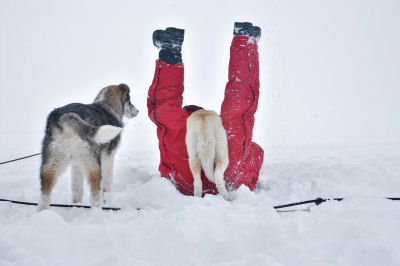|
Strona archiwalna!
Ta strona zawiera treści archiwalne, które nie były zmieniane po 23 września 2019 r. Jeśli chcesz wiedzieć więcej zapoznaj się z deklaracją dostępności
|
||||||
archiwum
 2006 2006
 2008 2008
 2010 2010
 2012 2012
 2014 2014 |
||||||

| ||||||
 |
 |
|||||

|
||||||
| strona główna założenia regulamin kalendarium wskazówki pobierz jury rejestracja zgłoszone projekty galeria gallery | archiwum kontakt | |||||
Description popularizing the research project When courageous and perseverant sailor and explorer, Willem Barents, set off on his last voyage to the far North of Europe, he had already been there and failed twice. Once he had to return because of unfavourable weather conditions, and once because of impassable ice. Third time he reached Spitsbergen, yet his ship got stuck there. The crew were forced to build a make-shift lodge and winter there, hunting arctic animals. When the conditions improved enough to try to escape from the ice trap, the crew in two boats set off on the way back home. Everybody survived, everybody but one person, the main chief navigator, Willem Barents. What remained of him is the name of one of arctic seas east of Svalbard archipelago. Abstract The aim of AWAKE-2 is to understand the interactions between the main components of the climate system in the Svalbard area: ocean, atmosphere and ice, to identify mechanisms of interannual climate variability and long-term trends. The main hypothesis is that the Atlantic Water inflows over the Svalbard shelf and into the fjords have become more frequent during the last decades due to changes in the ocean and atmosphere. The integrated effect of these events results in new regimes and changes in the atmosphere, ocean, sea ice and glaciers in Svalbard. Furthermore, changes in the cryosphere and geosphere create feedback effects in the ocean and atmosphere. A dedicated, multidisciplinary approach to achieve the project's aims will be adopted by carrying out the coordinated meteorological, oceanographic, glacio-logical and geophysical observations in Hornsund, on the adjacent shelf and the open sea. Being a link between the land and the ocean, Arctic fjords are highly vulnerable to warming and are expected to exhibit the earliest environmental changes resulting from the anthropogenic impact on the climate. In the Arctic, the inshore boundary of a fjord system is usually dominated by glaciers and seasonal freshwater input while its offshore boundary is strongly influenced by warm oceanic waters. Improved understanding of the fjords-ocean exchange and processes within Arctic fjords is of a highest importance because their response to atmospheric, oceanic and glacial variability provides a key to understand the past and to forecast the future of high latitude glaciers and Arctic climate. The synthesis will build on the first AWAKE and combine the new interdisciplinary AWAKE-2 results with other existing data into new and improved knowledge of the critical interconnections between atmosphere, hydrosphere and cryosphere.
|


|
|||||












